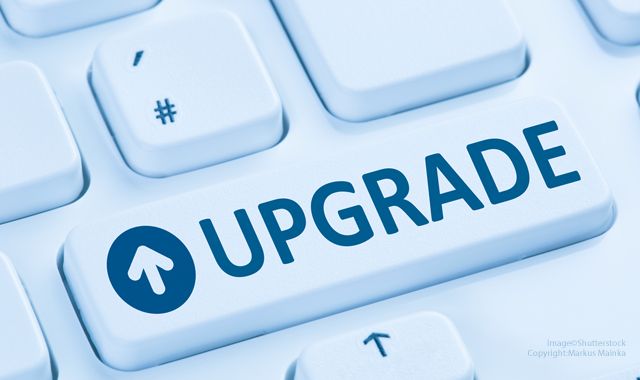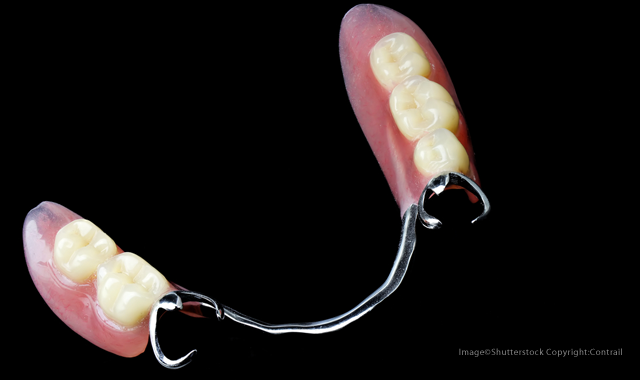5 ways to get involved with digital dentures
Considering digital dentures? Here are 5 ways to get started.
Digital design and manufacturing technologies have been slowly developing in our industry for over 30 years.

The majority of crown and bridge restorations are now metal-free - a trend that has largely been influenced by the shift to CAD/CAM and the streamlined precision that it offers. CAD/CAM removables have been slower to develop, but recent advancements have generated enough buzz to help them go mainstream in the near future. With more than 36 million fully edentulous Americans, here’s a look at how labs can get their feet wet and prepare for the coming onslaught of digital denture technologies.

Work with cutting-edge outsource partners
Some of the most advanced digital denture systems can be accessed on a case-by-case basis via outsource partners. This business model gives labs the opportunity to take advantage of new technologies without the need to invest in expensive CAD/CAM equipment. Products such as AvaDent (Global Dental Science) and Pala Digital Dentures (Kulzer) are available under this model, with the option to outsource the entire process or just a portion of it. This model may be of particular interest to C&B laboratories that are already equipped with 3D scanners and are interested in expanding their range of services into removables.

Add-on modules to your existing CAD software
Leading software providers including 3Shape, Dental Wings and Exocad have all developed their own versions of full denture design software. These licenses are typically available either as stand-alone versions or as modules to add to existing software licenses. A variety of manufacturing options are supported, including milling, 3D printing and hybrid techniques that allow for digital design with a combination of digital and traditional manufacturing. Often, the same software can be used to design custom impression trays, record bases and monolithic try-ins so that no aspect of the denture fabrication process is neglected.

Upgrade your CAM software
Labs that own 5-axis mills may be interested in milling their own dentures in-house. A number of CAM solutions already support milled PMMA dentures with many more on the way, again either as stand-alone solutions or with optional modules for expansion. A simple software upgrade can help labs cut down on milling time, reach undercuts better and provide a nicer surface finish.

Keep 3D printers on your radar
A number of printers already exist that are validated and approved for printing long-term full denture bases. The jury is out on whether or not the physical properties of these materials can rival those of a traditional heat-cured denture, but they do provide ease of use and can be fabricated in much shorter times than traditional denture techniques. In the coming years we will no doubt see a large influx of newer materials that will slowly start to replace traditional denture acrylics in the lab and clinic.

Don’t forget about partials
While the edentulous population in the United States tops 36 million, the number of Americans missing one or more teeth stands at more than 178 million. As popular as implants and CAD/CAM crowns are, they will not be able to address the staggering number of patients who are missing some but not all of their teeth.
Removable partial dentures have been fabricated digitally for a number of years now, yet a recent survey shows that only eight percent of RPD’s are fabricated through the use of CAD/CAM. Digital RPD design introduces a number of benefits, including reduced fabrication times and less material waste. Digital manufacturing methods exist for both traditional chrome-cobalt RPD’s as well as for newer metal-free options including PEEK and Valplast®. Perhaps the best part about digital RPD’s is the seamless integration with digital impression systems, providing labs with perfect mucostatic impressions for these sometimes challenging tissue-borne restorations.
Product Bites – January 19, 2024
January 19th 2024Product Bites makes sure you don't miss the next innovation for your practice. This week's Product Bites podcast features new launches from Adravision, Formlabs, Owandy Radiology, Henry Schein Orthodontics, Dental Creations, and Dental Blue Box. [5 Minutes]
Product Bites – December 22, 2023
December 22nd 2023The weekly new products podcast from Dental Products Report is back. With a quick look at all of the newest dental product launches, Product Bites makes sure you don't miss the next innovation for your practice. This week's Product Bites podcast features updated software from Medit. [2 Minutes]